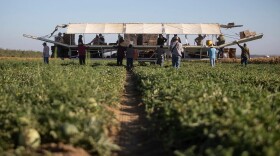Explore some iconic historical moments while debunking long-held myths and shining new light on past events in the series SECRETS OF THE DEAD. Advances in investigative techniques, forensic science and historical scholarship offer new evidence on forgotten mysteries.
"The World's Biggest Bomb" - Beginning in the 1950s, American and Soviet scientists engaged in a dangerous race to see who could build and detonate the world’s largest bomb. The results exceeded all expectations about how big a bomb could be built. This is an epic story where the United States led the way, but then left the field clear for the Soviet Union to break all records. Terrifyingly, the bomb-makers on both sides were flying blind as they pushed the technology far into unknown territory. The story of the race to build the world’s biggest bomb has never been fully told. But the 50-year anniversary in 2011 provides the perfect opportunity to share this chilling story with the world.
As soon as the bomb exploded, the test team knew something was wrong. Instead of five megatons, the blast turned out to be 15 megatons. The explosion vaporized three entire coral islands, sending the ash 100,000 feet into the air. It drifted eastward and rained upon hundreds of people living on islands to the north – a poison footprint of 7,000 square miles.
In "The World's Biggest Bomb," SECRETS OF THE DEAD shares an account by the commander of the bomb’s firing party, scientist Dr. John C. Clark, in which he describes how he and eight other scientists were trapped inside a concrete bunker 20 miles from ground zero. An interview with John R. Halderman, Marine Corps Veteran, who stood guard over ‘Castle Bravo,’ relates what it was like to be 23 miles from ground zero aboard the USS Curtis.
After the ‘Castle Bravo’ explosion, the United States shifted gears to concentrate on smaller, more precise bombs. However, at the same time, the Soviet Union continued to build massive devices capable of destroying entire cities. The Soviet bomb program reached its peak on October 30 1961, when a device they called the ‘Tsar’ exploded above the north European island of Novaya Zemlya. At 50 megatons, it released in a nanosecond, energy that equates to 10 times the entire quantity of explosives used in World War II. The blast wave went three times around the world and made ‘Castle Bravo’ look insignificant.
The race to build the world’s biggest bomb led to the signing of the Nuclear Test Ban Treaty in 1963 which banned the test of all nuclear weapons except for those conducted underground. But sadly, 57 years after ‘Castle Bravo,’ radioactive fallout still prevents the descendents of Bikini Atoll to return to their island.
SECRETS OF THE DEAD is on Facebook, and you can follow @SecretsPBS on Twitter.





